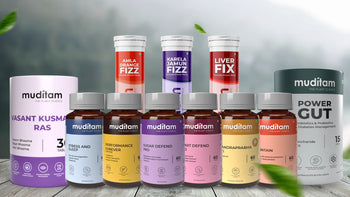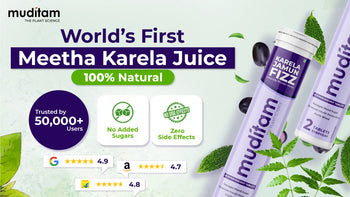8 Surprising Reasons Why Indians Add Ghee to Dal
Last updated on:
Dal and ghee – this comforting combo has been a staple in Indian homes for generations. Whether it's arhar dal, moong dal, or masoor dal, a spoonful of ghee poured on top transforms the entire experience. But is it just about taste? Not really. The tradition of adding ghee to dal has deep roots in nutrition, digestion, and overall wellness.
Let’s uncover 8 surprising reasons why this golden touch of ghee has been passed down through generations.
1. Boosts Digestion Naturally
Ghee is known to stimulate digestive enzymes, which help break down food better. When added to dal, it helps the body absorb nutrients more efficiently. It also soothes the stomach lining and prevents issues like gas or bloating that some people face after eating dal.
2. Balances Vata and Pitta Doshas
In Ayurveda, ghee is known to balance the body’s doshas, especially Vata and Pitta. Dal, being light and dry in nature, can sometimes increase Vata. Adding ghee makes the dal more grounding and calming, promoting balance and better health.
3. Improves Nutrient Absorption
Dal is rich in protein, iron, and fiber, but the body doesn’t absorb all of it easily. Ghee, being a healthy fat, helps absorb fat-soluble vitamins like A, D, E, and K from the dal and accompanying spices. So, that spoon of ghee actually helps your body use the nutrients better.
4. Enhances Taste and Aroma
Let’s be honest – nothing matches the rich aroma of hot ghee sizzling with jeera or garlic being poured over dal. It adds depth to the flavor and makes even a simple bowl of dal feel indulgent. This added taste often helps increase appetite, especially in children or elders.
5. Supports Healthy Weight
Contrary to popular belief, ghee does not make you fat when used in moderation. In fact, the combination of dal and ghee offers satiety, which prevents overeating. Ghee provides energy and helps in managing sugar cravings, making it helpful even for those trying to maintain a healthy weight.
6. Builds Immunity
Ghee is packed with antioxidants and essential fatty acids that boost immunity. Dal, on the other hand, is rich in plant protein and iron. Together, they make a wholesome meal that supports the immune system, especially when the body is fighting weakness, stress, or seasonal changes.
7. Good for Joints and Skin
Regular consumption of ghee keeps the joints lubricated and supports healthy bones. The collagen-friendly fats in ghee also promote better skin texture. When combined with protein-rich dal, it helps in tissue repair, making it a great combo for post-illness recovery.
8. Comforts the Mind and Body
There’s something incredibly calming about dal-chawal with ghee. It’s a comfort food not just for the body, but for the mind too. Ghee contains butyric acid, which supports gut health — and a healthy gut is directly connected to a healthy mind. No wonder we feel so relaxed after eating it.
Dal and Ghee: The Timeless Pair
Every region in India has its own way of making dal, but one thing stays the same – ghee is almost always involved. In some homes, it’s used in the tempering, while in others, it’s added on top just before eating. However you use it, know that it’s not just about flavor; it’s about nourishing the body and keeping traditions alive.
A Small Tip for Better Health
If you’re someone watching your fat intake, remember that you only need a small amount of ghee — about 1 tsp per meal is enough to enjoy all the benefits. Choose homemade or organic ghee for best results. Always add it at the end, so the nutrients are not lost in high heat.
Conclusion
Ghee in dal isn’t just a cultural habit; it’s a smart health practice rooted in ancient wisdom. In today’s fast-paced life, when our meals often lack depth and nourishment, this simple tradition offers an easy way to bring warmth, balance, and nourishment to our plates.
Next time you cook dal, don’t hesitate to add that spoonful of golden ghee — your body (and tastebuds) will thank you.










